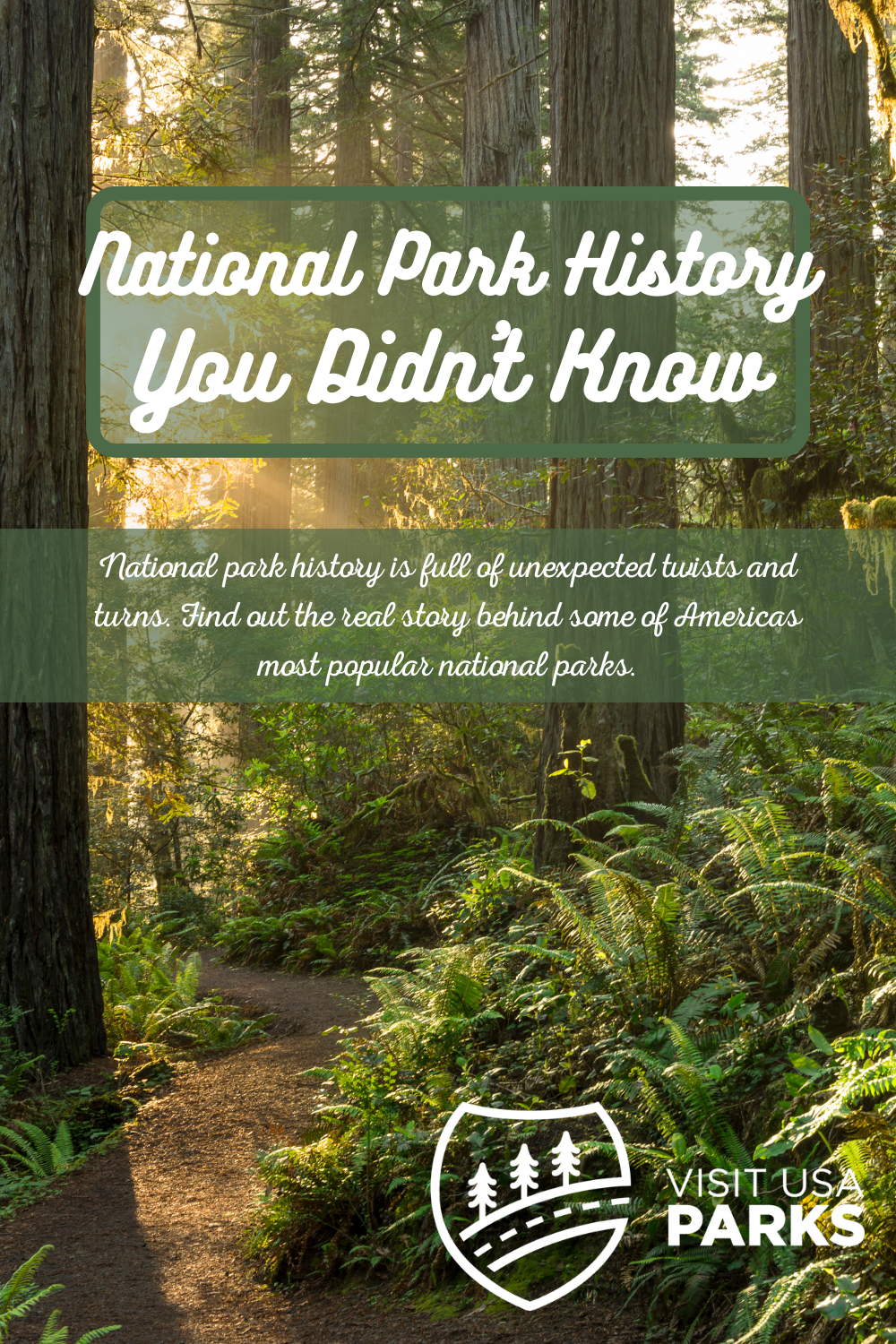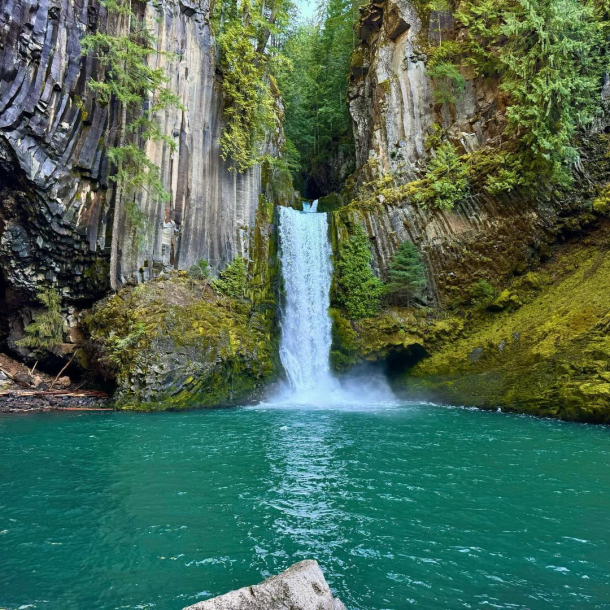Travel Tips
National Park History You Didn’t Know: Part 1
National park history is full of unexpected twists and turns. Find out the real story behind some of America’s most popular national parks.
Everglades National Park, Florida
To begin, we head south to the swampy Florida region known as the Everglades. Indigenous groups to this area lived alongside the land for centuries, moulding their communities to work with the wet, fragile biome. They recognized this special ecosystem as a web of rivers and marshes that created the perfect environment for unique plants and animals.
By the early 1900s, colonial settlers arrived in the Everglades and saw it for its potential profit. Quickly, wetlands were drained to build communities, towns, and farmland. Colonialists eventually dried out much of the wetlands causing irreversible damage. By the 1920s, scientists and conservationists realized the impending threat to the Everglades and started demanding US government protection. By 1934, the tropical Florida ecosystem was officially declared a national park. However, due to difficulties acquiring protected acres, it would take 13 more years for the rich marshlands to officially welcome visitors as Everglades National Park.
Redwood National Park, California
Did you know that the California timber industry campaigned against the creation of Redwood National Park? Back in 1920, when discussions of creating a park first began, few people were in support of preserving the seemingly endless forest. Locals depended on logging for their wellbeing; there was money to be made and mouths to feed. Preservation was simply not a main priority.
Despite lack of popular support, a group of conservationists, the Save the Redwoods League, began purchasing privately owned groves. These properties were donated to the state in hopes of creating state park land. Over the next few decades, arguments over the Redwoods continued between conservationists and logging companies. Especially after World War II, the logging industry was booming. Companies moved away from selective cutting to clear cutting, and thousands of privately held redwoods were logged.
Conservationists continued to struggle. That is until the National Park Service commissioned a survey through National Geographic to investigate a potential National Park site. Once published, the survey boosted redwood preservation efforts by highlighting the impressive discovery that the world’s tallest known trees were growing on the site. In addition, a row of redwoods growing along a major highway was cut down for infrastructure construction. Passing motorists closely observed the ugly effects of logging for the first time. These two major components secured national support for the future of Redwood National Park.
Glacier National Park, Montana
While preserving our beautiful landscapes may seem obviously beneficial, it can often be at the expense of Indigenous people who have called the land home for generations. At one time, the native Blackfeet territory spanned 28 million acres across what is now northern Montana, southern Alberta, Saskatchewan, and the land that is now Glacier National Park.
Towards the end of the 1800s, bison populations were almost completely eliminated by hunters who were directed by the US government to deny Native tribes a stable food source. At the time, bison made up about 80% of the typical Blackfeet diet. Eventually, with starvation looming, the Blackfeet nation ceded their land for $1 million and the right to continue to use the land for hunting, fishing, and gathering purposes.
Unfortunately, the federal government changed the rules just a few years later, when Glacier National Park was established in 1910. Since then, the Blackfeet Nation has not been allowed to hunt, fish, or gather in Glacier National Park as promised. Instead, many of the tribal descendants reside in a 1.5 million acre reservation nearby. Today, FAST (Food Access and Sustainability Team) Blackfeet and the Blackfeet Community College are dedicated nonprofits working to improve opportunities and resources available to the Blackfeet community.
Yosemite National Park, California
Dating back to the 14th century, the Southern Sierra Miwok Nation lived in the Yosemite Valley. In the 1850s, around the time of the California Gold Rush, miners swept through Yosemite. After naturalist John Muir wrote about the beauty of the area and advocated for its preservation, tourism heavily increased, causing harm to the native Yosemite resources. Indigenous leaders sent a petition to Congress, pleading for future support for themselves and their descendants. The petition was ignored.
In 1890, Yosemite National Park was officially created. Unlike many other parks, Native tribes were allowed to reside on park property. As a result, Indigenous livelihoods relied on park tourism. They sold crafted goods, artwork and photographs to park visitors. Beginning in 1916, they also participated in ‘Indian Field Days’, showcasing Native American skills, crafts, and games.
In the 1930s, the Native village community within Yosemite National Park was removed and replaced with new cabins as a way to control the Indigenous population. In this new village, residents were charged rent, which was a difficult challenge for Native peoples who faced immense discrimination. Once a resident lost employment or retired, their lease ended and they were forced to leave the valley. As a result, the park’s Native population was nearly cut in half by 1940. A new policy in 1953 stated only permanent employees could live in the village, further worsening the situation for the Miwok community. To make matters worse, officials destroyed houses once they were vacated to prevent newcomers. By the 1960s, almost all of the village was destroyed.
Not due to lack of effort, things remained dim Yosemite’s Miwok Nation for many years. However, newfound hope came in 2018 when a new Yosemite National Park superintendent signed a 30 year agreement that allowed a new Native village to be built in the park on the site of the old village. No one lives in the village, as it serves as a display to learn about Indigenous cultural and religious ceremonies. Although the gesture is a drop in the bucket compared to what the Southern Sierra Miwok’s actually deserve, some see this as a step towards connecting Indigenous tribes to their ancestral homeland and an example to other parks on how to start mending their relationships to Native communities.
While many of our beautiful terrains are protected today, the harsh stories throughout national park history cannot be forgotten. In regards to Indigenous communities who were here first, visit with respect, gratitude and appreciation. Although we can’t make up for lost time, we can offer support by keeping their stories alive.


